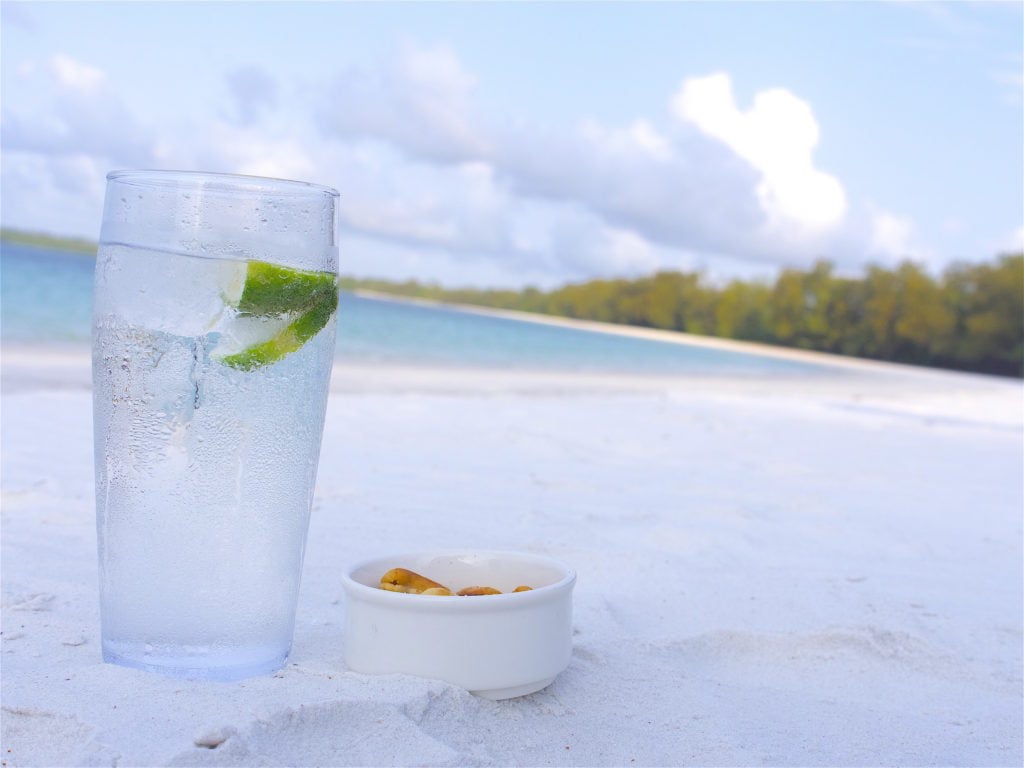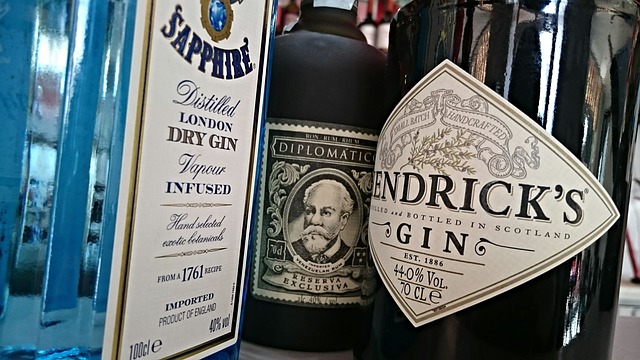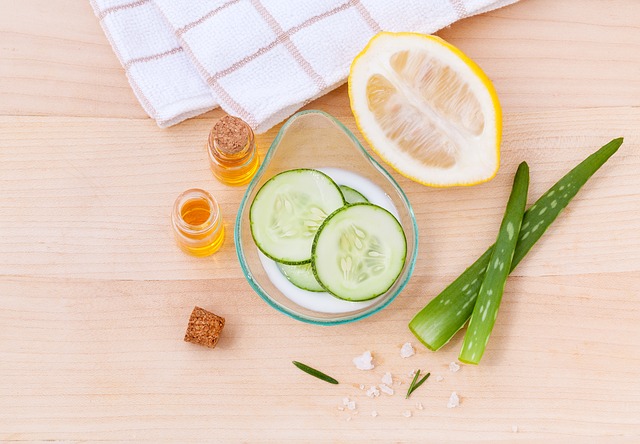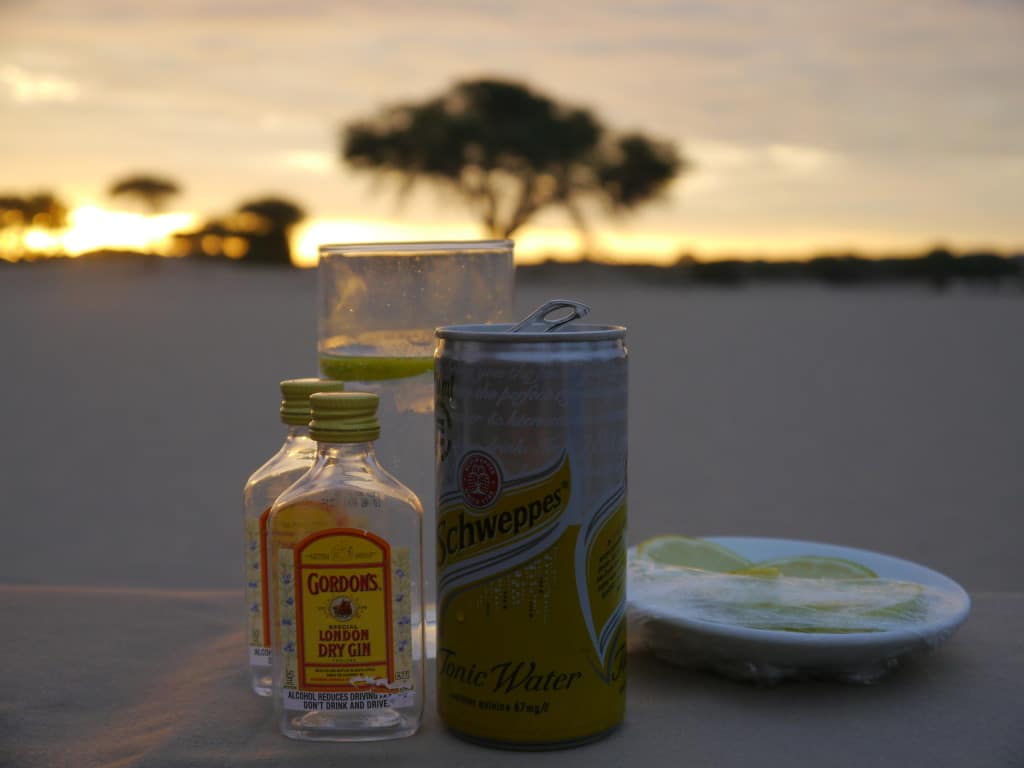One of the many curiosities surrounding safaris, a mode of travel that was pioneered by adventurers and Hollywood celebrities, is the common indulgence at sundown in the bush. Although you could ask for pretty much any drink to accompany the views, gin & tonics are the usual choice.
There is something special in that slightly off-bitter taste and the crystal clear bubbles that pairs well with the dry Savannah, the hot late afternoons and the wildlife. But the choice of drink is not a mere matter of taste but also a tradition that started in the British Army. Churchill thought highly of the humble drink. “The gin and tonic has saved more Englishmen’s lives, and minds, than all the doctors in the Empire.”
But why are gin & tonics the beverage of choice while on safari, and one your doctor would be happy for you to indulge in? Read on to find out more about gin and tonic’s origin.
The history of tonic water
The magical exploration trips into the vast African continent that started in the 19th century often ended with the explorer’s death or tragedy at the hands of cannibalistic tribes, disease or wildlife encounters. This was also the fear for European colonialists and imperialists of the 18th and 19th century when faced with tropical diseases that did not exist or had been eradicated back home.
Aside from using unguents and other remedies to fend off mosquito-borne deadly diseases like malaria, early British colonial explorers to Africa and India discovered that there is a more pleasant way to keep the bugs at bay: gin and tonics.
Gin and tonic is a drink first invented by the army of the British East India Company in the 1700s, almost by chance.
As malaria became more of a threat to the Empire, soldiers were given doses of quinine powder to prevent and treat the disease. But the powder, extracted from the cinchona tree, also called the fever tree, was first discovered by the Spanish colonialists in Peru. It was very bitter and so the soldiers started to mix it with soda water and sugar, thus creating the very popular tonic water.
As the popularity of tonic water grew, Schweppes launched the commercial version of today’s drink as the “Indian Quinine Tonic” in 1870 to serve the growing demand of overseas British nationals that needed to take daily doses to prevent malaria.
The history of gin
As the poison of choice believed to be invented in Holland in the 17th century as a medicine, gin plummeted to its death after it was considered the source of social demise. The word gin comes from the French and Dutch words for juniper which is used in its production and it was first invented by a Dutch chemist and used to cure all sorts of illnesses.
Its distillation and expansion boomed in England when King William III (of Dutch origin) came to the throne in 1689 and declared it the official drink of the court.
Anyone could set up their own home distillery and start producing the drink. As a result, abuse spread and fifty years later the government passed laws to control its production and consumption, but it was too late for the spirit’s reputation which had fallen to the ground. Until the 19th century when it met tonic water.
Gin and Tonic Origin: How gin met tonic and became the most important tool of war
The soldiers of the British empire in India soon discovered that they could mix gin, of which they had a ration, with lime and tonic water, which they were taken to prevent malaria, and enjoy it in the afternoon as the sun was going down, to make the quinine bitter flavours more pleasant. And so the gin and tonic was born.
Many, like Churchill, speculated that quinine, and the gin and tonic, contributed to the strength of the British Empire in India and other tropical colonies like Kenya and Malaysia, keeping the soldiers strong and healthy through uprisings and world domination. In fact, Amy Stewart argues that quinine was also a determinant in the American debacle in Asia during WWII, when the Japanese seized Indonesia and took their source of quinine.
And Indonesia did not get the quinine by chance but also through another colonialism route. When a British businessman, Ledger, discovered that the powerful properties of the cinchona tree bark had turned it into a luxury commodity that was becoming extinct as the trees that were cut down were not being replaced. He traveled to Peru to smuggle seeds out only to sell them back to the Dutch, who planted them in their tropical colony of Java. And Java became the largest and only production region in the world of quinine in the first half of the 20th century.
Today’s gin and tonic
When Indonesia fell to the Japanese, the Allied Forced needed to find a replacement for quinine and so a synthetic version still used today, was created.
Today’s tonic water has much less quinine than the original version and most commercial versions use the synthetic variant. The drink is usually sweetened, making it less bitter.
If you want to know what the early colonialists and troops indulged in while in India, you can still buy tonic water made with quinine powder harvested from original cinchona trees by traditional methods in the Democratic Republic of Congo and produced by Fever Tree.
So next time, instead of taking expensive and side effect ridden medication for malaria, sip on gin & tonics, a much more delicious and enjoyable way to keep away the mozzies, and my choice for a sundowner in the bush. I am sure your doctor would approve.
- Check if you need a visa, get help processing it at iVisa.
- Never ever leave without travel insurance. Get affordable coverage from World Nomads or long term insurance from Safety Wing.
- I find all of my flights on KAYAK. Check their Deals section too.
- Search for all your transportation between destinations on the trusted travel booking platform Bookaway.
- I book all my day trips and tours via GetYourGuide, they are the best and their tours are refundable up to 24h in advance.
- Get USD35 off your first booking with Airbnb.
- Compare hotels EVERYWHERE at HotelsCombined and book with Booking.com.
- Compare car rental prices at Rentalcars.com




